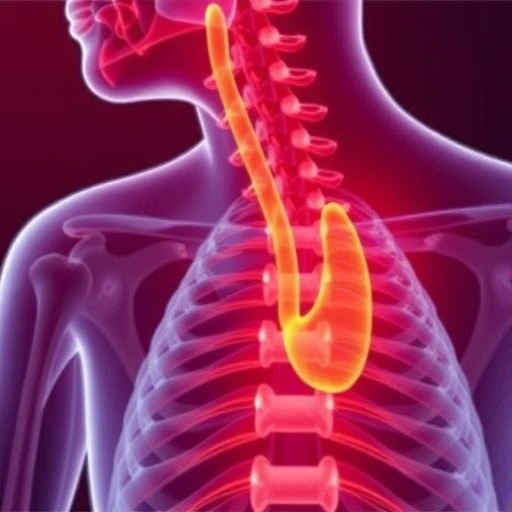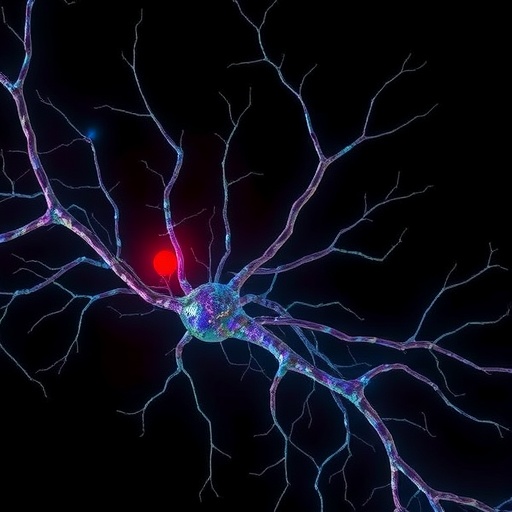In the intricate world of neonatal intensive care, where every intervention carries weighty consequences, understanding the domino effect of early complications is critical. Among extremely low gestational age newborns (ELGANs) — infants born before 28 weeks of gestation — the vulnerability to medical adversities is extraordinarily high. A groundbreaking study now sheds light on how an early episode of acute kidney injury (AKI) in these infants could significantly increase the risk of subsequent late-onset infections (LOI), unraveling new layers of complexity in neonatal care and long-term outcomes.
Acute kidney injury, a sudden decline in kidney function, is a frequent but often under-recognized problem in critically ill neonates, particularly those born at the threshold of viability. The kidneys, vital for regulating fluid and electrolyte balance, also have substantial roles in inflammatory modulation and immune regulation. When these fragile organs falter, does this set the stage for vulnerabilities extending beyond renal function? The research conducted by Turner et al. delves decisively into this question by tracking ELGANs who experienced AKI and monitoring their subsequent risk of LOI, infections that occur after the first week of life.
Late-onset infections represent one of the most devastating complications in premature infants, often leading to increased morbidity, prolonged hospital stays, and in many cases, mortality. Despite improvements in neonatal intensive care practices, LOIs remain pervasive, undermining the survival and developmental prospects of these tiny patients. Turner and colleagues sought to identify early predictive markers that could flag infants at heightened risk for these severe infections, focusing on the role of kidney injury as a potential contributor.
The study followed an extensive cohort of ELGANs across multiple centers, meticulously characterizing episodes of AKI during the first 14 days of life. Using stringent criteria for AKI diagnosis adapted for neonates, the researchers pinpointed those infants who experienced any degree of kidney injury. Subsequently, the infants were monitored for occurrences of culture-confirmed late-onset infections, providing robust data on timing, severity, and outcomes of these infectious episodes.
What emerged from this detailed investigation was a compelling association: infants who suffered AKI had a markedly increased risk of developing late-onset infections compared to their counterparts without kidney injury. This association held firm even after controlling for variables such as gestational age, birth weight, severity of illness, and exposure to invasive procedures, underscoring the independent predictive value of AKI on subsequent infection risk.
The biological underpinnings of this link between AKI and LOI, while not fully elucidated, are likely multifactorial. AKI can prompt systemic inflammatory responses that disrupt immune homeostasis, potentially impairing the neonate’s ability to mount effective defenses against pathogens. Moreover, kidney dysfunction may influence the clearance of inflammatory mediators and immune complexes, perpetuating a milieu that favors microbial invasion and sepsis. This nexus of renal impairment and immune dysregulation offers novel insights into the pathophysiology underlying increased infection susceptibility.
Beyond illuminating this critical relationship, the study also examined temporal patterns, noting that the earlier the onset of AKI, the higher the risk for subsequent infections. This temporal dimension highlights a critical window for intensified surveillance and potential early interventions in infants who experience kidney injury soon after birth. By identifying these neonates early, clinicians might tailor strategies to mitigate infection risk, such as optimizing antimicrobial stewardship, bolstering immunologic support, or minimizing unnecessary invasive exposures.
In addition to demonstrating the association between AKI and LOI risk, Turner et al. dissected clinical characteristics differentiating infants with and without kidney injury. They documented differences in hemodynamic instability, fluid balance, and the need for mechanical ventilation, emphasizing that AKI is often intertwined with a constellation of high-risk clinical parameters. Their detailed dataset enriches the understanding of how systemic physiology interacts to influence outcomes in ELGANs.
The implications of this study reverberate far beyond the NICU walls. Recognizing AKI as a modifiable risk factor for late-onset infections opens new avenues for research into preventive and therapeutic approaches. Interventions targeting earlier detection of kidney injury, renal protective strategies, and modulation of immune responses may collectively shift the trajectory for these most vulnerable of patients, potentially reducing the burden of severe infections that exacerbate morbidity and mortality.
Technologically, this research exemplifies the power of multicenter collaboration and precise neonatal phenotyping in decoding complex clinical associations. The use of standardized AKI definitions for neonates and the rigorous confirmation of infections provide a methodological blueprint for future studies aiming to unravel the multifaceted challenges in ELGAN care. This elevates the study from a mere clinical observation to a cornerstone for constructing targeted pathways in neonatal medicine.
Furthermore, the study prompts a reevaluation of current neonatal care paradigms — encouraging clinicians and researchers alike to integrate kidney function more centrally into risk assessment algorithms. Rather than treating AKI as a transient complication, it must be weighed as a harbinger of downstream immunologic vulnerabilities, mandating vigilance and comprehensive management plans.
The public health ramifications are profound. Extremely preterm infants account for a disproportionate share of neonatal intensive care admissions worldwide, and infection-related complications remain a leading cause of death and long-term disability among this group. By linking kidney injury to infectious susceptibility, this research shines a spotlight on an underappreciated determinant of neonatal outcomes and reinforces the need for systemic improvements in early detection and multidisciplinary care pathways.
Looking forward, the study’s findings lay fertile groundwork for the development of novel biomarkers and therapeutic targets. The integration of kidney biomarkers with infection risk profiling may enable precision medicine approaches tailored to the unique vulnerability of ELGANs. Such strategies could revolutionize neonatal care by transitioning from reactive treatment of infections to proactive risk mitigation informed by kidney health trajectories.
In summary, the investigation conducted by Turner et al. offers a transformative perspective on the interplay between renal health and infection susceptibility in the most fragile neonates. Their findings advocate for a holistic neonatal care model that acknowledges the ripple effects of acute kidney injury, transforming it from a solitary complication into a key predictor of subsequent infectious challenges.
As the neonatal community digests these insights, the urgent quest is to translate them into concrete clinical protocols that improve survival and quality of life for ELGANs. Through enhanced interdisciplinary collaboration, innovative research, and compassionate clinical practice, the hope is to rewrite the narrative for these infants, turning vulnerabilities into survivable challenges.
In an era where neonatal outcomes hinge on nuanced understanding and swift intervention, studies such as this underscore the vital importance of integrated organ system monitoring. Acute kidney injury emerges not only as a marker of renal distress but as a gateway event signaling broader systemic risk, demanding heightened awareness and action.
The research adds a compelling chapter to the evolving story in perinatal medicine — one that intertwines nephrology, neonatology, immunology, and infectious disease in a shared mission to safeguard those born on the very edge of viability. The message is clear: in neonatology, no organ exists in isolation, and neither do its complications.
By elucidating the hidden links between early kidney injury and subsequent infection risk, this study charts a course toward improved prognostication, targeted care advancement, and ultimately, better outcomes for ELGANs worldwide. It is a clarion call for neonatal health professionals to recognize and address the silent yet significant impact of renal events on the fragile neonate’s future.
Subject of Research: Acute kidney injury’s association with late-onset infection risk in extremely low gestational age newborns.
Article Title: Acute kidney injury and subsequent risk of late-onset infection among extremely low gestational age newborns
Article References:
Turner, M.J., Griffin, R., Schuh, M. et al. Acute kidney injury and subsequent risk of late-onset infection among extremely low gestational age newborns. J Perinatol (2025). https://doi.org/10.1038/s41372-025-02410-1
Image Credits: AI Generated
DOI: https://doi.org/10.1038/s41372-025-02410-1
Tags: acute kidney injury in neonatescomplications of premature birthextremely low gestational age newbornsfluid balance in premature infantsimmune regulation in critically ill neonateskidney function impact on neonatal healthlate-onset infections in preterm infantslong-term outcomes of AKI in preemiesneonatal intensive care challengesresearch on neonatal complicationstracking infections in ELGANs





